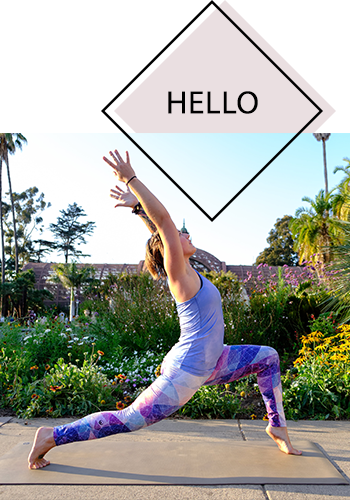4 Ways To Improve Your Running Speed
/Running has been my saving grace during this COVID situation.
There’s just something about being out on the trail that helps me clear away all negative energy. It feels super empowering to be outside, breathing, tapping into my body’s strength.
As a novice runner, I’m incredibly grateful to be able to bring you the expertise of a fellow blogger and avid runner, David Dack. Check out his awesome tips below for how to increase your running pace!
4 Ways To Improve Your Running Speed
Whether you run for stress relief or you’re prepping for your first half-marathon, sooner or later, you’re going to want to improve your speed—as in, your ability to cover more distance in less time.
If you typically run for distance, switching your focus toward achieving a faster pace will empower you to step up your training program.
In today’s article, we’ll tackle a few practical training guidelines that can help you run faster.
Lace up and dig in.
Interval Running
A form of high-intensity interval training, interval running consists of alternating intervals of intense running (sprints) with jogging and/or walking intervals.
Think of interval running as a series of peaks and valleys—you go hard and fast during the peaks, then you recover by slowing down during the valleys, repeating the cycle for the duration of the workout.
The intensity of the interval depends largely on the interval length, but the rule of thumb is to go as hard as possible for the duration of the effort.
So if you are doing 200M reps, you’re sprinting full throttle for the entire distance, recovering for 30 to 60 seconds, then repeating for the rest of the session.
As a beginner, start with shorter intense periods and longer breaks. As your fitness improves, make the work intervals longer and the recovery phases shorter. You could also tailor your interval plan to fit with your racing and running goals.
Plyometric Training
Plyometric training involves performing powerful aerobic, usually bodyweight, exercises in order to boost speed, endurance, and strength.
The main goal with plyometric training is to push your body to the max in short intervals, and it can do wonders for both your athletic power and endurance.
Don’t take my word for it. A study from the Journal of Strength and Conditioning Research revealed that middle and long-distance runners who did plyo training for six months improve their 2400-m race results by roughly 4 percent.
So how do you incorporate plyometric training into your routine?
You don’t need to spend a lot of time doing plyo exercises to see results. Research shows that simply doing 5 to 10 minutes of jumping exercises twice a week is enough.
Here are a few of my favorite plyometric exercises.
Jump roping
Box jumps
Burpees
Jumping lunges
Jumping squats
Skipping drills
High knee sprints
Add Drills
Another measure you can take to improve your running speed is to improve muscle strength and the mobility needed to achieve a faster speed. Enter drills.
Investing 10 to 20 minutes to do a few drills can drastically improve your running technique and economy— your ability to move more efficiently as well as improve your stride cadence and overall athleticism.
In essence, drill training helps become a better runner by:
Strengthening not only the muscles but the specific joints needed for faster running
Improving the communication between your legs and brain, which in turn makes you more efficient
Improving agility, coordination, and proprioception—all critical for helping you become a better athlete overall
Improving cadence, the number of times your feet hit the ground
When should you add drills?
Perform these drills as a part of your warm-up routine or at the end of an easy run. Do a few minutes of the following:
High knees
Strides
Single-leg stand ups
Single-leg step ups
High skips
Heel raises
Grapevines
Running arms
Pawing
Banded sprints
Skipping
When performing these drills, you must do them correctly, and so is recommend that you practice under the guidance of a personal trainer or running coach who can assess your technique and provide instant feedback.
Practice Recovery
It’s critical to let your body heal after hard training. Proper recovery prevents overuse injury, replenishes your energy stores, and keeps your motivation high.
During your rest days, feel free to do nothing but chill the entire day or try light cross-training exercises, such as yoga, swimming, or easy paced spinning. As a rule, don’t do back-to-back of hard sessions and give yourself at least one recovery day per week.
So how do you know it’s time to ease off?
Experiencing a handful of the following symptoms is a true sign that you’re overdoing it.
Chronic fatigue
Persistent aches and pains
Loss of appetite
Undesired weight loss
Mood swings and irritability
Conclusion
There you have it!
The above tips some of the best training guidelines that can help take your running speed to the next level. Now it’s just up to you to put them into practice and start sweating. Then it’s just a matter of time and practice. The rest is just details, as the saying goes.
About the Author:
David Dack is an established fitness blogger and running expert. When he’s not training for his next marathon, he’s doing research and trying to help as many people as possible to share his fitness philosophy. Check out his blog Runners Blueprint for more info.
Thanks, David, for the great insight on how to improve running speed. I’ll be trying these out as I prepare for my half marathon!
Namaste.
























